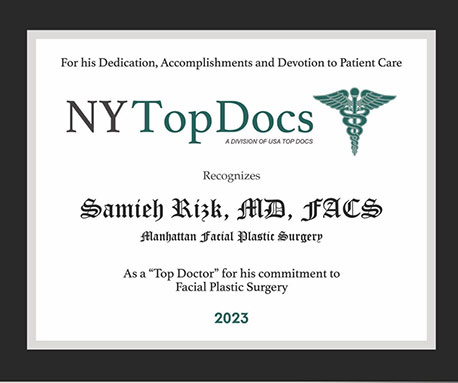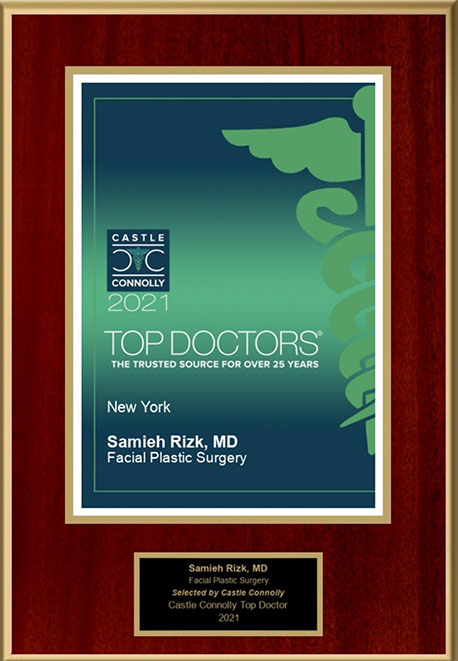Latino & Hispanic Rhinoplasty
Latino and Hispanic rhinoplasty can address any number of aesthetic complaints a patient may have about his or her nose. This may include making the nose smaller or larger, changing the angle, and addressing the characteristics addressed below.
Latino/ Hispanic Nose Characteristics and Rhinoplasty Techniques
There is enormous variance in Latino/Hispanic nose characteristics due to the fact that Latinos often have a combination of indigenous American, Spanish, Portuguese, African and other ethnic heritage. That being said, the typical Hispanic nose is often wider than the average Caucasian nose and narrower than the typical African nose, with relatively thick skin, a bulbous tip and wider nostrils than most Caucasian noses.
Here are some of the most common Latino/Hispanic nasal characteristics and the facial plastic surgery treatments used to alter them.
Wide Alar Base/ Flared Nostrils
Many Hispanic noses are characterized in part by a very wide nostril base. (The nostril base is the area at the bottom of the nose, where it connects to the upper lip.) In many cases, the Hispanic nose is also flared, which means that it has a very round shape at the nostril base.
There are several techniques used by surgeons to narrow and reduce the tip and nostrils, including wedge excision, nasal sill excision, the V-Y advancement technique, and combined excisions. The procedure can be performed as a primary or revision surgery, depending on the needs of the individual patient.
Thick Nasal Skin
Among the most common Hispanic nasal characteristics is relatively thick skin, which often makes the surface of the nose appear less defined; this is due in large part to the fact that the cartilage and bone below the thick skin does not show through as much as it would with thin skin.
Addressing thick skin is often one of the primary aspects of a Hispanic rhinoplasty procedure. Oftentimes this means that the surgeon must focus more on reshaping the cartilage framework, which may be achieved through shaving certain areas of cartilage — and almost certainly through cartilage grafting. The cartilage for the grafts is frequently harvested from the septum or ear. In upwards of 50 percent of Latino rhinoplasty cases the nasal tip needs grafting in order to achieve the desired refinement and definition. The cartilage grafts are carefully placed over the existing tip cartilage. Once the nasal skin has re-draped over the new tip cartilage framework, it usually has better shape and definition.

Dorsal Hump
Another common feature of Latino noses is a dorsal hump, which is usually most visible from the profile view. In some patients, the bump is comprised of both bone and cartilage, and extends across the length of the nasal bridge. In certain male Latino patients the dorsal hump is primarily comprised of bone, with very little cartilage. Oftentimes, a dorsal bump or hump accentuates the droopy appearance of a droopy nasal tip. Dorsal humps and bumps are addressed by shaving down the dorsal cartilage.
Flatter Nasal Bridge
In many cases Latino patients also have a flat nasal bridge. The surgeon must take care to avoid reducing the dorsal bridge’s height more than necessary. The objective in Latino rhinoplasty patients is usually to give the nose a straighter appearance from the profile view and accomplish a subtle transition into the area of around the nasal tip. In fact, in some cases, Hispanic rhinoplasty patients ask the surgeon to leave subtle convexity when reducing the bridge. With Latino patients, overly aggressive reduction of the bridge height can make it so the nose is not in harmony with the surrounding facial features.
Some Hispanic patients with a flat nasal bridge require cartilage grafts for structural support and definition. Implants are sometimes necessary when the patient does not have enough septal cartilage or ear cartilage to harvest, or when it is not strong enough. Some surgeons believe that the best option for dorsal definition is the Medpor implant, which also tends to blend with surrounding tissues better than other implants. Careful, meticulous shaping of the implants with powered instruments is important for achieving a smooth and natural outcome. The implant must be placed in a pocket beneath the muscle layer so that it is protected by thick skin; the skin also provides a form of padding that hides the implant.
Desired Results of Latino/ Hispanic Rhinoplasty
The primary objectives of any Latino/Hispanic rhinoplasty procedure should be to achieve facial proportion and beauty without compromising the patient’s ethnic identity. This means that the surgeon must change the nose and other facial features in a way that refines them and provides definition while taking into account facial proportions. Each rhinoplasty case must be tailored to the individual patient to achieve optimal results.








